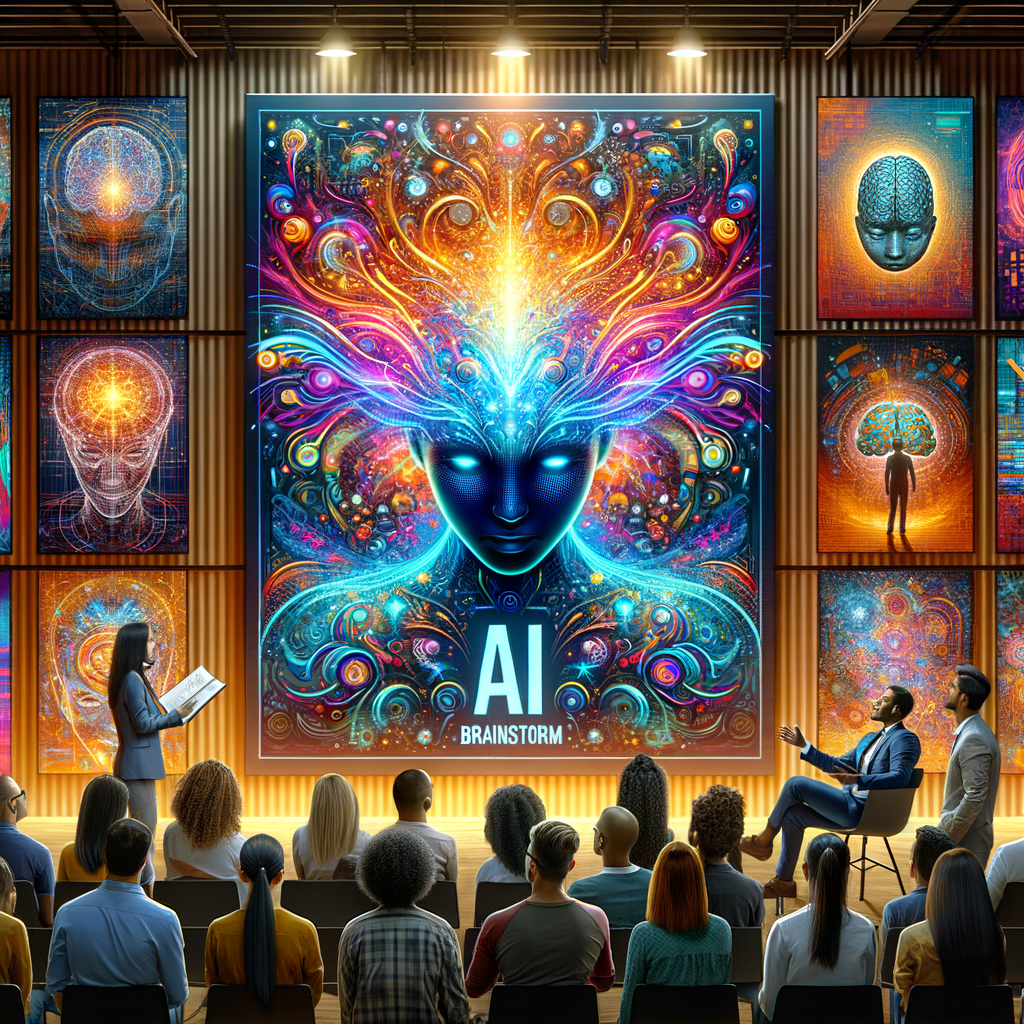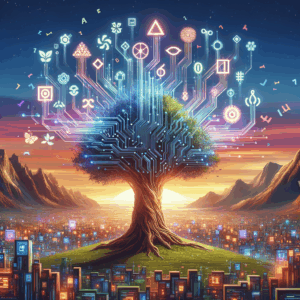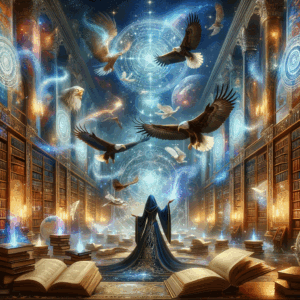
AI Transforms Poster Design Competitions: Stunning Innovations
- Understanding the Intersection of AI and Poster Design Competitions
- The Role of AI in Creatively Enhancing Design Processes
- Case Studies: How AI is Reshaping Poster Design Competitions
- Key Innovations Fueling AI-Powered Poster Design
- The Benefits of AI in Poster Design Competitions
- Challenges of Using AI in Design
- Future Trends in AI-Driven Poster Design Competitions
- Conclusion: Embracing the Synergy of AI and Human Creativity
- Frequently Asked Questions
- References
Understanding the Intersection of AI and Poster Design Competitions
AI is revolutionizing many fields, and graphic design is no exception. In poster design competitions, artificial intelligence plays a crucial role. It enhances creativity and sharpens design skills, leading to stunning innovations that not only captivate audiences but also streamline the design process. By harnessing machine learning algorithms, designers can explore new aesthetics and techniques, pushing boundaries that were previously unimaginable.
As technology evolves, so too do the tools available to designers. Traditional competencies are adapting to incorporate AI, transforming how artists create their work. Designers learn to collaborate effectively with AI, leveraging its strengths while maintaining their unique artistic voice. This relationship fosters a new level of innovation in poster design competitions, making them more exciting and competitive than ever.
The Role of AI in Creatively Enhancing Design Processes
AI tools provide designers with intelligent solutions that can dramatically enhance the design process. From generating color schemes to suggesting layouts, AI offers numerous advantages. These tools analyze vast amounts of data, learning what works and what doesn’t in design. They can even predict trends based on audience preferences, allowing designers to stay ahead of the curve.
One notable aspect of AI in design is its ability to iterate quickly. Designers can produce multiple variations of a concept in moments, something that could take days or weeks traditionally. This rapid iteration process allows for more experimentation. Designers can explore countless avenues before deciding on the final product, fostering innovation at an unprecedented rate.
Case Studies: How AI is Reshaping Poster Design Competitions
Consider several prominent poster design competitions that have embraced AI. Many contests have introduced categories that reward AI-assisted designs. For instance, the Adobe Creative Jam has categories specifically focused on AI contributions to creativity. These competitions exemplify how AI can be a creative collaborator, not just a tool but a true partner in the design process.
Another example is the Berlin International Graphic Design Award. In recent years, the competition has recognized AI-generated entries for their unique aesthetics. Designers use AI algorithms like GANs (Generative Adversarial Networks) to create visually striking posters that may not have occurred to them on their own. As a result, the winning entries challenge conventional design notions, expanding what is considered possible in visual storytelling.
Key Innovations Fueling AI-Powered Poster Design
Several innovations have emerged as leaders in the transformation of poster design through AI. These innovations significantly change how designers approach their projects. Here are some of the key advancements worth noting:
1. Generative Design: This AI-driven technique allows designers to input parameters while the AI generates multiple design solutions. The designer then selects the most compelling options for further refinement.
2. Style Transfer: AI employs neural networks to transfer an artistic style from one image to another. This enables designers to experiment with different artistic influences while maintaining their original imagery.
3. Automated Color Suggestion: AI tools automatically generate color palettes based on the emotional tone of the content. This helps designers quickly find the right mood for their projects.
4. Typography Recommendations: AI analyzes readability levels alongside aesthetics and suggests fonts that best suit the message, enhancing communication and visual appeal.
5. Smart Layouts: AI algorithms can aid in creating balanced compositions by recommending optimal placements for elements within a poster design based on design principles.
These innovations reflect the blend of technology and creativity that is reshaping poster design competitions. The results are often unexpected and visually stunning.
The Benefits of AI in Poster Design Competitions
The integration of AI in poster design competitions brings numerous benefits. To begin with, it encourages diversity in creative expression. By leveraging the computational power of AI, designers can explore unique visual directions that might otherwise remain untapped. They are free to experiment without the constraints that traditional methods impose.
Moreover, AI democratizes design. Individuals with limited design experience can use AI tools to create high-quality posters. This opens avenues for fresh perspectives, making competitions more inclusive and varied. Often, outstanding designs emerge from less experienced designers who harness AI for innovation.
Challenges of Using AI in Design
While the benefits are considerable, challenges exist when integrating AI into poster design competitions. One major concern involves the authenticity of creative work. Some argue that AI-generated designs may lack the individual touch that defines great art. For purists, the essence of creativity lies in human emotion and experience, elements that AI cannot replicate.
Additionally, there’s the issue of copyright. When AI creates a design based on existing work, questions arise about ownership. Who owns a design generated by AI? The implications for intellectual property are vast and require attention as AI continues to proliferate in creative fields.
Future Trends in AI-Driven Poster Design Competitions
Looking ahead, several trends will shape the future of AI in poster design competitions. As AI tools become more sophisticated, expect to see deeper integrations into design workflows. For instance, we may soon witness AI apps that analyze audience responses in real time, helping designers adjust their creations for maximized impact.
Additionally, the development of AI ethics will play a role in shaping future competitions. Ensuring responsible use of these technologies will become increasingly critical. As designers navigate new creative landscapes, establishing fair guidelines around AI usage will foster trust and openness in the design community.
Conclusion: Embracing the Synergy of AI and Human Creativity
The integration of AI into poster design competitions represents a fascinating convergence of technology and creativity. Designers now stand on the edge of a new frontier, where machine intelligence complements human ingenuity. This synergy enhances creativity, pushes boundaries, and transforms what it means to create visually compelling work.
As the industry continues to evolve, designers must embrace these tools while remaining mindful of the spirit of creativity. By working alongside AI, they unlock possibilities that could redefine poster design as we know it. The future is bright, and the innovations are only just beginning.
Frequently Asked Questions
1. Can AI completely take over poster design?
No, AI enhances the design process but cannot fully replace human creativity and emotion.
2. Are AI-generated posters eligible for competitions?
It depends on the competition rules. Many contests are now accepting AI-assisted designs.
3. How does AI improve a designer’s workflow?
AI automates repetitive tasks, provides design suggestions, and accelerates the iterative process.
4. Can anyone use AI tools for designing posters?
Yes, many AI tools are user-friendly and accessible to individuals with varying design skills.
5. What are Generative Adversarial Networks (GANs)?
GANs are AI algorithms that can generate new data by pitting two neural networks against each other.
6. Is there a risk of losing creativity by using AI?
While there is a concern, AI serves as a collaborative tool that can spark new ideas rather than diminish creativity.
7. How do I choose the right AI tool for my design?
Consider your specific needs, such as ease of use, features, and your level of design experience.
8. What should designers be cautious about when using AI?
They should be mindful of copyright issues and ensure that AI supplements rather than replaces their creativity.
9. Can AI analyze audience reactions to designs?
Yes, some AI tools can analyze engagement metrics and audience preferences to inform design decisions effectively.
10. How can I get started with AI in design?
Start experimenting with beginner-friendly tools and software that incorporate AI features into the design process.
References
1. Adobe Creative Cloud. (2023). Transforming Creativity with AI. Adobe
2. Berlin International Graphic Design Award. (2023). Celebrating Innovation in Design. Berlin Graphic Award
3. Wired Magazine. (2023). AI in Creativity: The Next Frontier. Wired
4. IEEE Spectrum. (2023). Generative Design Tools: Revolutionizing Graphic Design. IEEE Spectrum
5. Creative Bloq. (2023). AI Tools Every Designer Should Know About. Creative Bloq

